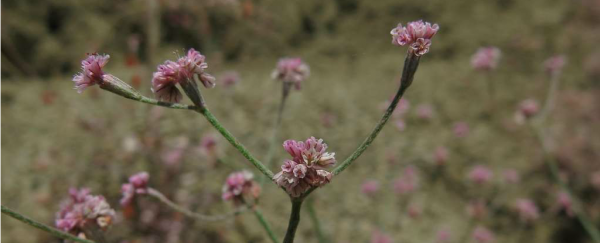Botanists in California have just announced that they've discovered a half-acre, 1.8 million-plant cluster of Mount Diablo buckwheat (Eriogonum truncatum), a pink flower that, until 2005, was thought to be extinct for the past 70 years.
The team is calling the find the 'Holy Grail' of botany, and have refused to expose the exact location of the flowers, out of fear that hikers and tourists would flock to the patch.
"It's a really exciting discovery, because the previous place where they found this plant was a small location, and the biggest number of plants there on any given year was 100," Michele Hammond, a botanist from the East Bay Regional Park District, told Peter Fimrite from SF Chronicle.
"This is almost 2 million plants. We're super excited about it."
While the exact location remains a secret, East Bay Regional Park District officials said that the extremely rare flowers were found by two botanists from ecology consulting firm, Nomad Ecology, on the 6,096-acre Black Diamond Mines Regional Preserve in Antioch, California.
The flowers are pink and round, resembling colourful cotton balls.
"I had personally hoped to find this thing for so many years, and then I suddenly walk up to this population that was so numerous," one of the team behind the discovery, ecologist Heath Bartosh, told SF Chronicle. "It was like, wait a minute, this can't be real. I'm dreaming."
So why is this such a big deal?
Well, largely because many researchers has assumed that the flower - which was originally discovered near Brentwood, California back in 1862 - was extinct, until a very small patch containing roughly 20 plants was discovered back in 2005 by a grad student walking through Mount Diablo State Park.
Before the rediscovery in 2005, no one had seen the plant since 1936. In the years following the small find, scientists have tried to get the flower's population to rebound by planting upwards of 80,000 seeds in different regions.
Despite planting so many seeds, though, only about 200 plants took root.
Now, with such a large number recently discovered growing on their own in the wild, the team hopes to better understand how the flower works and what they need to prosper.
"The Antioch population is a great discovery. Its habitat is quite different from the 2005 rediscovery site, and provides valuable information for efforts to develop new populations," Holly Forbes, from the University of California's Botanical Garden, told SF Chronicle. Forbes was not involved in the recent find.
While the newly found patch is definitely a good sign for Mount Diablo buckwheat, researchers caution that the populations are still very much at risk of extinction, because they are located in areas that are prone to wildfires.
Because of this, the team says that proper protection - such as keeping the location secret and safe - is important, or the flowers might disappear again before anyone has a chance to study them properly.
"This is the ultimate discovery in a rare plant treasure hunt," Hammond said. "I love seeing the crazy diversity of flowers in California. If we don't protect them, one by one these species are going to drop out and we will lose the fun of walking through an area and seeing different flowers."
Hopefully, after further study is carried out, botanists will understand how to keep the flowers happily growing in the wild for many years to come, though it likely won't be easy.
